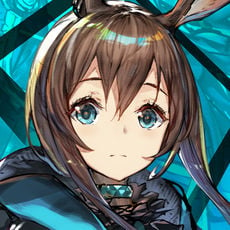Introduction
Many thanks to this lore video on BiliBili for deciphering the hieroglyphs on the obelisk and Twitter user _potatocha for the information on the real life obelisks.
It is immediately obvious that Beeswax is a reference to the Ancient Egyptians, seeing that she has the eye of Ra and her obelisk. And then there were a lot of Yugioh memes since that series also makes several such references.
In this article, I will elaborate on the references in more detail.
Etymology of Beeswax
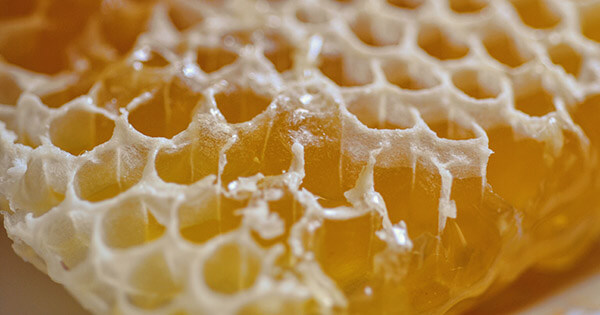
Beeswax
Unlike her name, Beeswax is not a bee. Bee operator when? In fact, we have no insects at all. I wonder why. But Beeswax is significant to the Ancient Egyptians.
Beeswax (cera alba) is a natural wax produced by honey bees of the genus Apis. The wax is formed into scales by eight wax-producing glands in the abdominal segments of worker bees, which discard it in or at the hive. The hive workers collect and use it to form cells for honey storage and larval and pupal protection within the beehive. Chemically, beeswax consists mainly of esters of fatty acids and various long-chain alcohols.
Ancient Egyptians believe that it has magical powers. After all, it is used in processes of creation and is related to life itself. They recognized the value of beeswax in mummification and used it for the embalming process. They also used the wax to seal the coffin and make it air tight, further preserving the body. The Egyptians preserved their writings on papyrus and on cave walls using beeswax, and these writings have remained unchanged for more than 2,000 years. They even recognized the importance of beeswax in health, as prescriptions dating back to 1550 B.C. called for beeswax in various formulations. Ancient jewelers and artisans utilized the lost wax casting technique, which involves sculpting an object in beeswax, coating the object with clay, and then hardening the clay with heat. The heat melted the wax, leaving a clay shell that was a perfect replica of the beeswax sculpture. Molten metal was then poured into the clay shell and allowed to harden before the clay was removed. It is also used in many religious rituals.
Therefore, it is very fitting that an operator with many references to ancient Egypt is named Beeswax. Especially when she has a theme of life and creation with the gods and pharaohs mentioned later.
Species and connections to gods

From Beeswax’s official art, we can see a symbol and the words ‘Ovis Ammon’ written below. This confirms the species she is based on.

Real life Ovis Ammon (argali) for comparison.
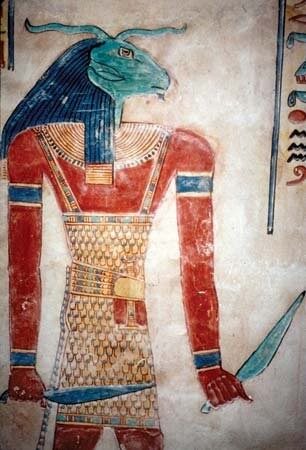
A possible reference to Khnum, a ram-headed god of creation who made life out of clay.
Another reference is Amun (left) and Amun-Ra (right), where Beeswax has lots of references to.
When Egypt conquered Kush, they identified the chief deity of the Kushites as Amun. This Kush deity was depicted as ram-headed, more specifically a woolly ram with curved horns. Amun thus became associated with the ram arising from the aged appearance of the Kush ram deity, and depictions related to Amun sometimes had small ram's horns, known as the Horns of Ammon.
As the cult of Amun grew in importance, Amun became identified with the chief deity who was worshipped in other areas during that period, namely the sun god Ra. This identification led to another merger of identities, with Amun becoming Amun-Ra.
Ammon (another spelling of Amun) was often depicted with ram's horns, so that as this deity became a symbol of supremacy, kings and emperors came to be depicted with Horns of Ammon on the sides of their head in profile, as well as the deities not only of Egypt, but other areas, so that Jupiter was sometimes depicted as "Jupiter Ammon", replete with Horns of Ammon, after Rome conquered Egypt, as was the Greek supreme deity Zeus. This tradition continued for centuries, Alexander the Great being referred to in the Quran as "The two-horned man", a reference to his depiction on middle-eastern coins and statuary as having horns of Ammon.
Obelisk
An obelisk is a tall, four-sided, narrow tapering monument which ends in a pyramid-like shape or pyramidion at the top. Originally they were called tekhenu by their builders, the Ancient Egyptians. The Greeks who saw them used the Greek term obeliskos to describe them, and this word passed into Latin and ultimately English.
Obelisks were prominent in the architecture of the ancient Egyptians, and played a vital role in their religion placing them in pairs at the entrance of the temples. The word "obelisk" as used in English today is of Greek rather than Egyptian origin because Herodotus, the Greek traveller, was one of the first classical writers to describe the objects. A number of ancient Egyptian obelisks are known to have survived, plus the "Unfinished Obelisk" found partly hewn from its quarry at Aswan. These obelisks are now dispersed around the world, and fewer than half of them remain in Egypt.
There are specific real life obelisks that Beeswax’s obelisk refers to. But first, we need to decipher the hieroglyphs on her obelisk.
Hieroglyphs

Cartouche (the middle part that looks like a bullet) of obelisk is pharaoh's name as Egyptians believe that names have power. The hieroglyphs have two types of readings: phonetic and meaning. Phonetic doesn't make any sense. So the meaning is sun, land, water. It means the world and it is part of the Egyptian creation myth where the creator is the sun god, Ra.

The top part has ankh (meaning life and sun worship), house (building), pool (stool and furniture) leads to imagery of birth, where life begins and creation. A reference to Ra as well.

The symbol on Beeswax coat is a reference to the ankh. Another meaning of the triangle on Beeswax's clothes could be the hieroglyph of 'give'. Which sure looks like CC Blade's symbol that was released same time as Beeswax on the China server.

Here's an example of a sentence in hieroglyphs: The king of Egypt, Thutmose IV, given life to.
So if we put the hieroglyphs in Beeswax's obelisk together, it forms the sentence of: During creation (beginning of time), the sun god Ra, everlasting/give.
It matches the purpose and symbolism of sun worship.
Lateran and Unfinished Obelisks
Based on the Khnum and Thutmose IV references, we can conclude that Beeswax’s obelisks refer to these real life obelisks.
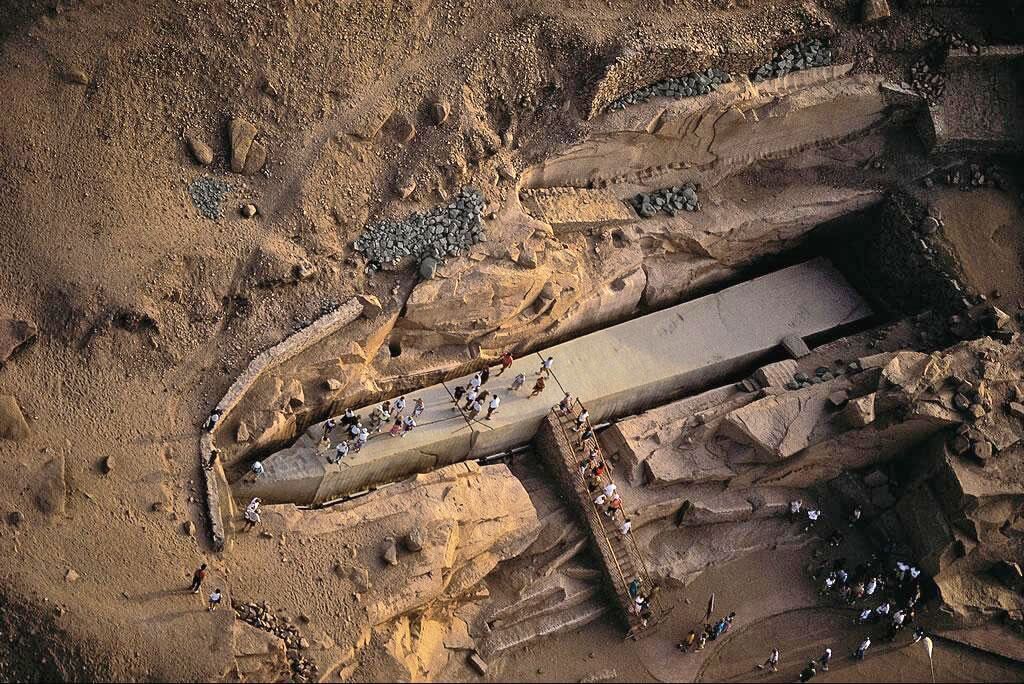
Unfinished Obelisk in Aswan
There is an obelisk called the unfinished obelisk located in Aswan. Made from red granite, it's not known who built this and for whom, but most believed that the construction of this obelisk was ordered by King Hatshepshut.
King Hatshepshut was the daughter of Tuthmosis I, who built a temple & several small obelisks (also from same material with the unfinished one) in honour of Khnum.
Hatshepsut is "more known" as a female pharaoh. However, she also ordered the people at that time to potray her as a male pharaoh. Her being pharaoh was also controversial.
It is estimated that if this obelisk was finished then it would be the biggest and heaviest ancient obelisk. The obelisk was assumed to be built by King Hatsehepsut's order to complement another obelisk and placed in Karnak Temple. Hatshepsut claimed that she was the daughter of Ra and Khnum gave them the blessing of health due to Ra's request.
Apparently, the obelisk that probably was supposed to be complemented by the unfinished obelisk is now known as the Lateran Obelisk. The Lateran Obelisk is currently the largest standing ancient Egyptian obelisk in the world, built by Thutmoses III (Hatshepshut's son). The Lateran Obelisk was originally placed in Karnak Temple as the only obelisk (usually obelisks came in pairs), hence the theory that the unfinished obelisk might be related with this obelisk (also the fact that both were similar in size and most likely built when Egypt is prosperous.). As the name suggests, the obelisk is now in Rome.
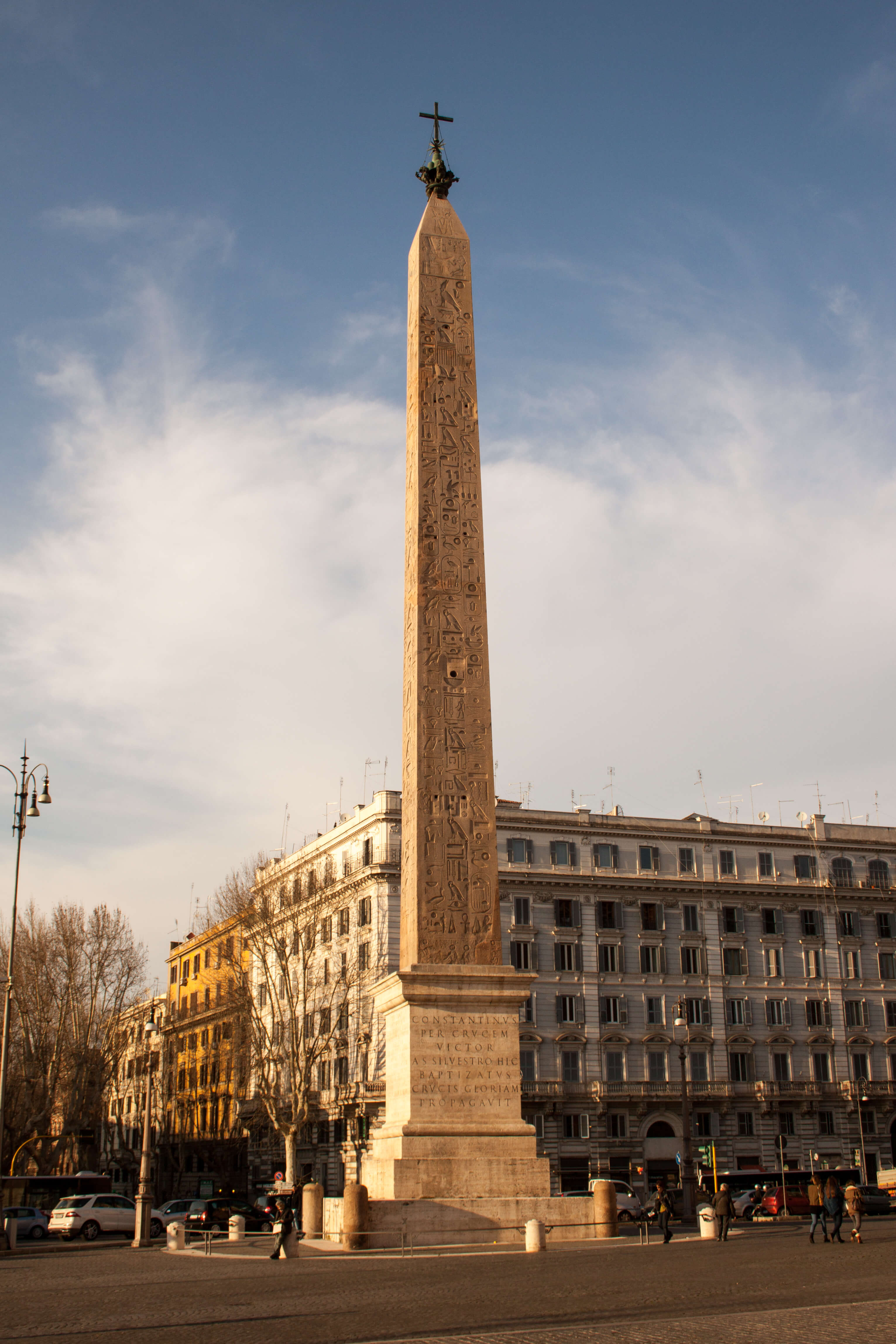
Lateran obelisk. The largest standing obelisk in the world.
The pair of obelisks could be in parallel to Beeswax looking for her relative, especially when obelisks should come in pairs. I sure hope that relative is doing fine. Though the Lateran obelisk really makes me think of Laterano as well. Hmm.
Eye of Ra
The eye of Ra can be seen on Beeswax's E2 art. It repels negative energy and restores harmony.
The Eye of Ra or Eye of Re is a being in ancient Egyptian mythology that functions as a feminine counterpart to the sun god Ra and a violent force that subdues his enemies. The Eye is an extension of Ra's power, equated with the disk of the sun, but it also behaves as an independent entity, which can be personified by a wide variety of Egyptian goddesses, including Hathor, Sekhmet, Bastet, Wadjet, and Mut. The Eye goddess acts as mother, sibling, consort, and daughter of the sun god. She is his partner in the creative cycle in which he begets the renewed form of himself that is born at dawn. The Eye's violent aspect defends Ra against the agents of disorder that threaten his rule. This dangerous aspect of the Eye goddess is often represented by a lioness or by the uraeus, or cobra, a symbol of protection and royal authority. The Eye of Ra is similar to the Eye of Horus, which belongs to a different god, Horus, but represents many of the same concepts. The disastrous effects when the Eye goddess rampages out of control and the efforts of the gods to return her to a benign state are a prominent motif in Egyptian mythology.
The Eye of Ra was involved in many areas of ancient Egyptian religion, including in the cults of the many goddesses who are equated with it. Its life-giving power was celebrated in temple rituals, and its dangerous aspect was invoked in the protection of the pharaoh, of sacred places, and of ordinary people and their homes.
Was-sceptre

The was (Egyptian wꜣs "power, dominion") sceptre is a symbol that appeared often in relics, art, and hieroglyphics associated with the ancient Egyptian religion. It appears as a stylized animal head at the top of a long, straight staff with a forked end.
Was sceptres were used as symbols of power or dominion, and were associated with ancient Egyptian deities such as Set or Anubis[2] as well as with the pharaoh. Was sceptres also represent the Set animal. In later use, it was a symbol of control over the force of chaos that Set represented.
Was sceptres were depicted as being carried by gods, pharaohs, and priests. They commonly occur in paintings, drawings, and carvings of gods, and often parallel with emblems such as the ankh and the djed-pillar. Remnants of real was sceptres have been found. They are constructed of faience or wood, where the head and forked tail of the Set animal are visible. The earliest examples date to the First Dynasty.
Conclusion
Therefore, Beeswax makes lots of references to Ancient Egyptian culture with her references to various gods, obelisk and staff. Suitable for her being from the mysterious deserts of Sargon. Which is supposedly the Middle East, but includes Egypt, India and the Amazonian countries.
Speaking of that, another operator from the Sargon desert, Sesa, actually has even more mythology related lore (Hindu naga from India who becomes Buddhist dragon from China) after I wrote about the Nobel parallels. But I will leave that to another article which will be even longer than this.

